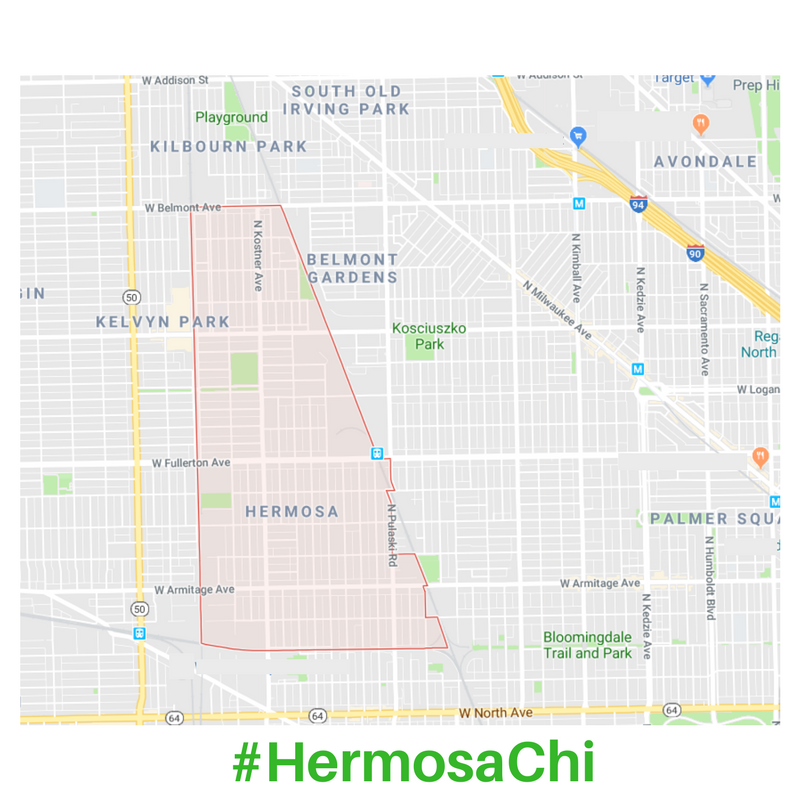Hermosa, Chicago
Hermosa is most recognizable on the Chicago community map by it's tall, triangle-like shape. Bordered by several Chicago Northwest and West side neighborhoods, Hermosa has ample transportation options and access to many parks, shopping and community services.
From Logan Square to the east, Avondale and Irving Park to the North/Northeast, Belmont-Craigin to the west and Humboldt Park to the south give the neighborhood a centrally-located feel of both city and community.
Interactive map not working for you?
Check out the map images below.









